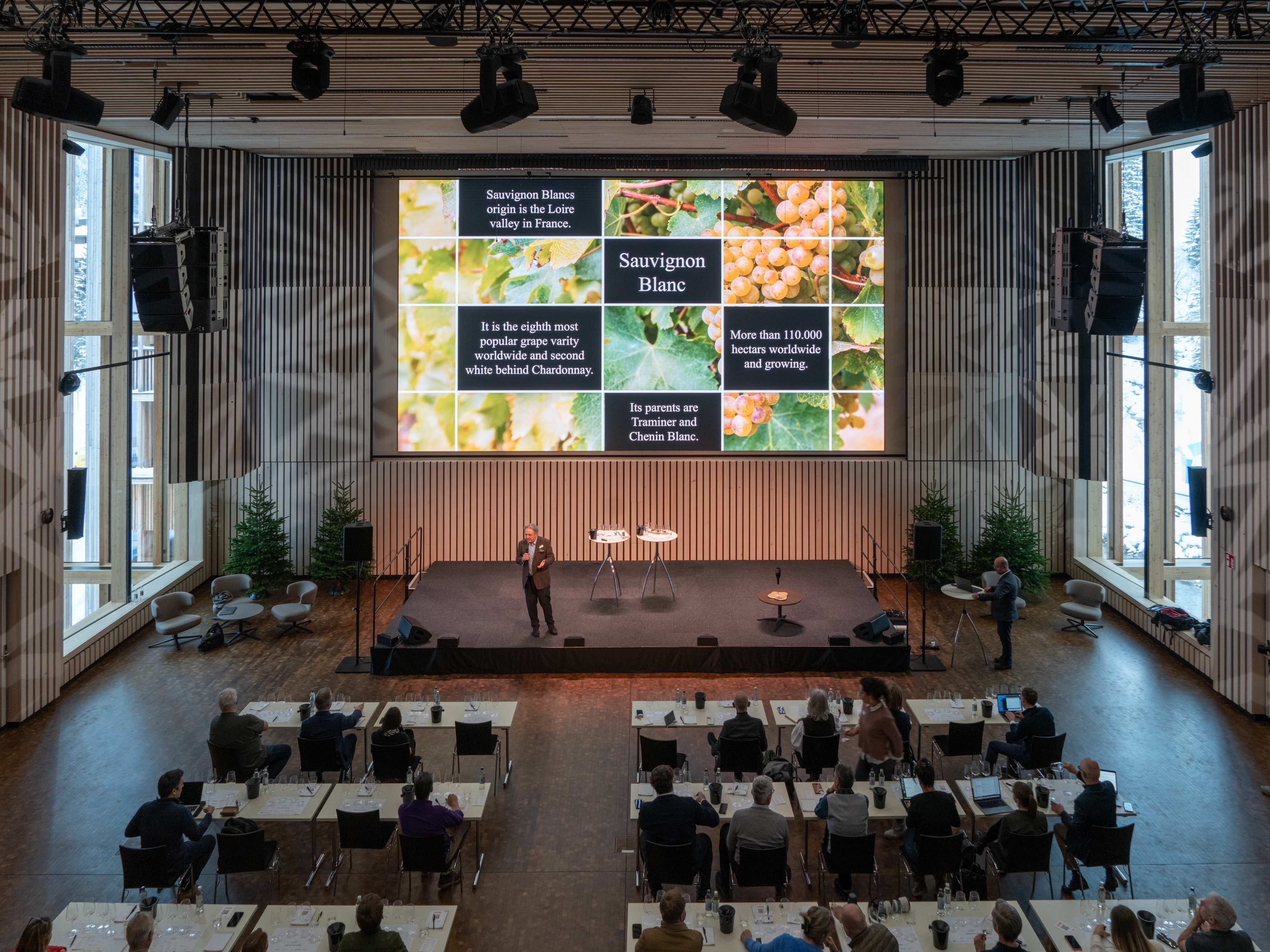The first five parts of The Buyer Covid-19 Hub include the first back in March, the second in April, the third in May followed by the most recent Hubs from mid May through to early June and the fifth Hub to mid June here.
The Buyer’s Covid-19 rolling hub has been selected as one of the best in the country amongst specialist business media by the UK Press Gazette, the industry bible for journalists, in its Coronavirus Excellence Journalism initiative.
June 25
David Babich on why he is unlikely to be travelling well into 2021
On paper everything about the way New Zealand has handled the Covid-19 crisis and managed to effectively rid the country of the virus has won plaudits around the world. But it has been hard won, says David Babich, head of Babich Wines in Marlborough, New Zealand.
He says the lockdown was far more severe than it has been in other parts of the world, noticeably the UK and whilst the country has a much smaller population, there really has been a sense of community and Team New Zealand to get through the pandemic. Now it has come out of lockdown the measures are still tough and with strict border controls in place, Babich does not anticipate being able to travel, even if he wanted to, until well into 2021. He already doubts, for example, that he, or any other New Zealand producer will be in a position to attend ProWein in 2021.
Here in this wide ranging interview with Richard Siddle for VINEX, the global bulk and bottle trading platform, he explains what he and his business have been able to do during lockdown, how the harvest was able to operate as near normal as possible, and that it is well placed to come out of this in a good place with on-going growing exports into its key markets in Asia, China and the US – as well as its traditionally strong distribution in the UK.
Click here to watch the full interview.
June 24
UK government advice for on-trade on how to re-open
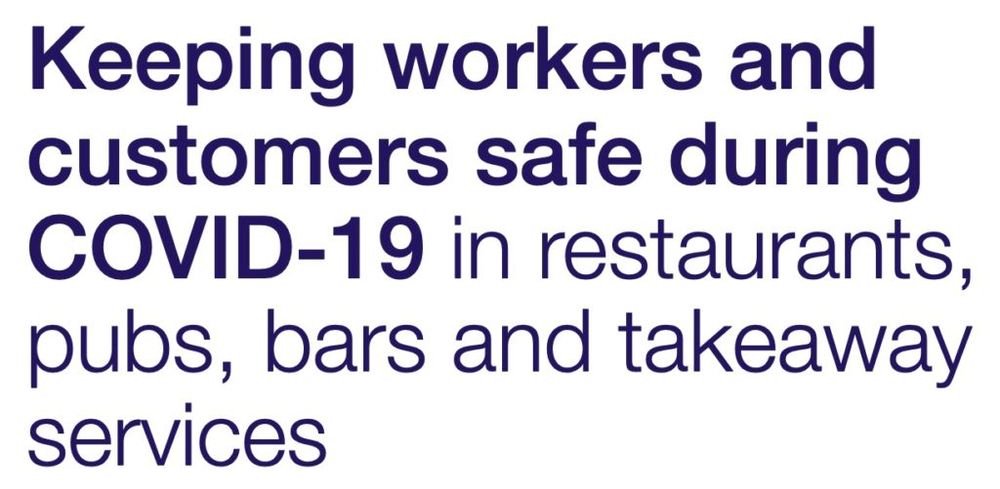
The government has issued comprehensive advice and guidance on how restaurants, bars and pubs can re-open from July 4 in a new 43 page report.
The guide – which you can download here – will make for vital reading the coming days as the on-trade collectively works out how and what it can re-open either by July 4 or some time soon after.
What’s clear is that it is going to involve a whole lot more than simply refilling your beer tanks, and getting bottles back on shelves and the kitchen fully back and up and running again. The task will be clearly a lot easier for those operators who have been able to keep going with delivery services or providing food for emergency workers during lockdown.
A lot of the report reads like you are about to open a scientific laboratory rather than a place for people to meet and enjoy themselves, with whole sections on staff and customer safety and the constant measuring and assessments that need to be maintained to ensure standards are kept. It’s very much about managing risk, planning for it and acting on in.
All of which is completely understandable considering the stakes are so high and the on-trade can’t be seen responsible for resulting in a second wave of Covid-19. You can download the report here.
Bibendum produces Getting Back to Business guide
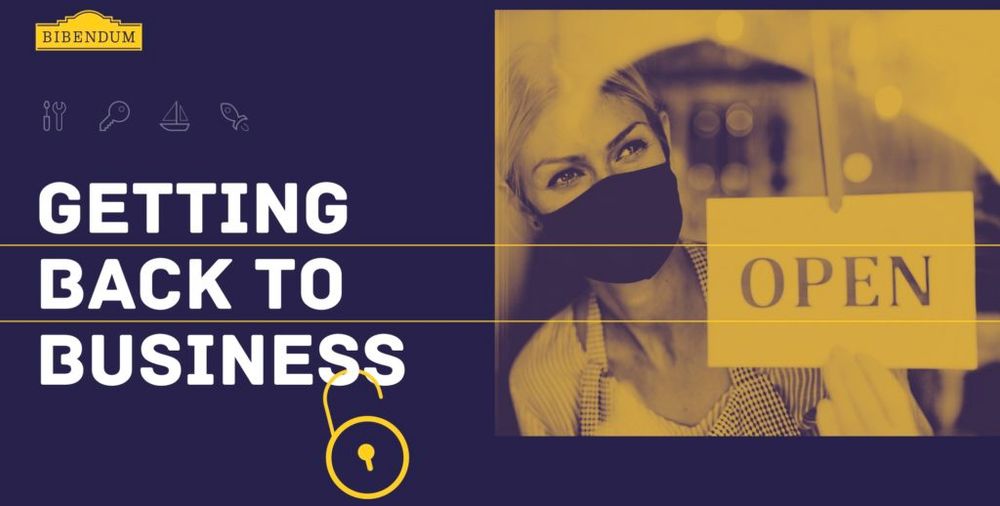
Bibendum has released a new downloadable guide – Getting Back to Business – to help its on-trade customers get themselves back on their feet and be a in a position to open their outlets come July 4. It has produced a wide ranging set of measures and recommendations that restaurants and bars can use as a guide to see what they ideally need to be doing to make sure they are ready to go in a way that is going to work and be safe for their staff and their customers.
The guide claims: “We want to help you be ready for not only reopening, but the weeks to come afterwards, with the right range, service, and marketing support.”
With the situation changing all the time it has also included a list of links of trade bodies and government sites for operators to use to keep themselves up to date. It has divided the report into four sections:
- Time to Prepare: what needs to be done over the next 10 days to get sites safe to re-open with the right range, risk assessments, staff training, investment in new payment appand the like.
- Back to Business: what to do in the opening weeks of businesses re-opening in terms of managing costs, cash flow and supplies from key partners as well as pro-active marketing and merchandising.
- Navigating the New Normal: What bars and restaurants need to do to encourage more customers to break lockdown and come and visit them.
- To The Future and Beyond: what steps can be put in place that can be there for the long term of a very different on-trade.
You can download the guide here.
Half of consumers ready to go back to restaurants as more people turn to alcohol in lockdown

New research from Brandwatch shows how much our drinking habits have changed in the UK with all age groups admitting to drinking more alcohol in lockdown – on average by over 50% of the population. A similar proportion are also looking forward to going back to restaurants from July 4.
It is the younger age groups that are consuming the most with close to 60% of 18-34 year-olds drinking more, followed closely by those aged 35-54 years of age. Just over 40% of the 55 plus age group are drinking more alcohol.
Whilst we have seen the percentage of people looking to drink less, or not at all, increase in recent years, it seems lockdown has pushed more people towards having a drink with only the 54 years and over age group breaking the country average of around 20% of people trying to drink less. Brandwatch claims one in 10 have decided to go teetotal and avoid alcohol altogether.
Brandwatch also reveals that going back to a restaurant is the number one priority for over 50% of people post lockdown, followed by going out doing outdoor pursuits. Only just over 20% people are looking forward to returning to the cinema and there is even less demand for going to the theatre at just over 10% and less so again for concerts and museums.
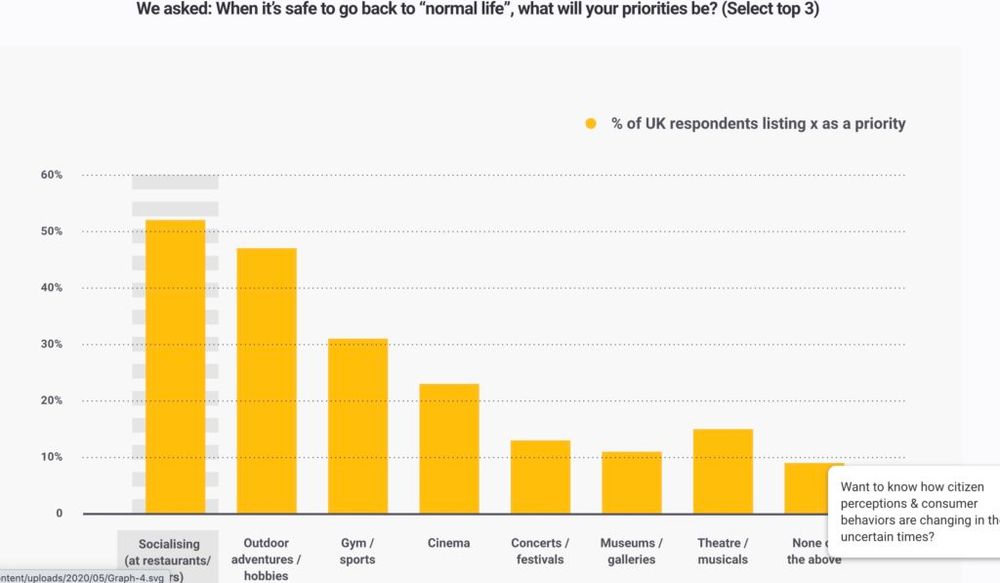
Consumers were also asked what will be the determining factors in what makes them decide what to buy in the future. See the chart below.
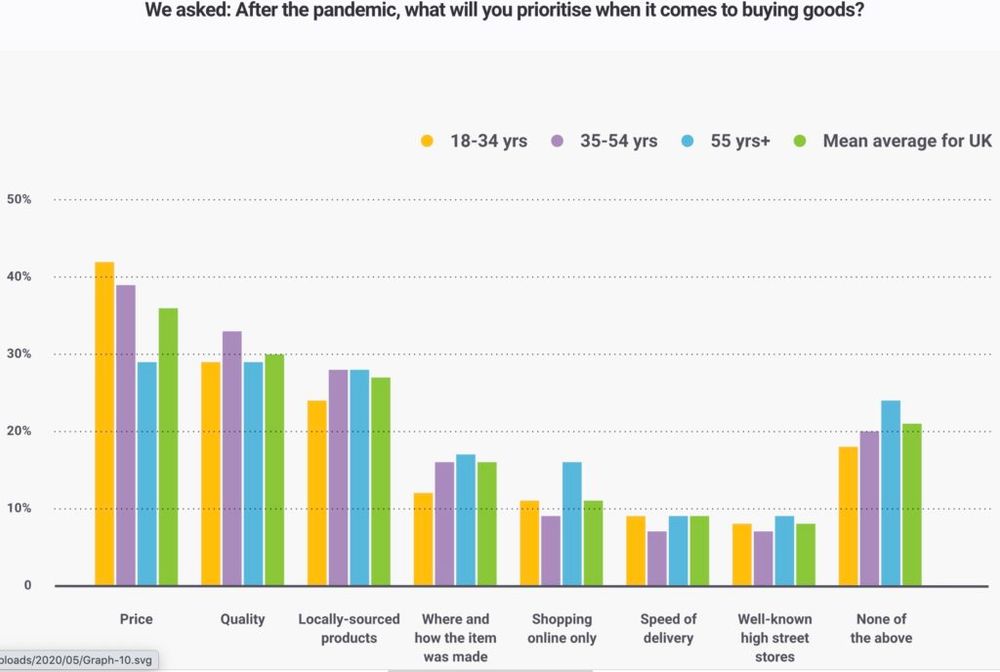
Bâtonnage online conference tackles women and race issues within the wine industry
The Bâtonnage://Connect conference analysing the role of women in the wine industry continues to be held online with a series of debates, virtual tastings and webinars on a wide range of issues.
The full upcoming webinar series is available to view here including a Defining Gender Across Generations at 6pm BST on June 24 and Thursday, June 25, with its The FIZZ is Female session (also at 6pm BST)
One of the key debates held so far was one entitled: Stirring It Up: Colour, Wine, and Feminism with Julia Coney, Shalini Sekhar, Theodora Lee, Kelly Mitchell, and Priyanka French where they were able to share their experiences as black women working in the wine industry.
You can watch a full copy of the video here or read below with an extract from the debate.
What are the most powerful and meaningful steps that a white woman can do to genuinely show that they care about being an ally?
Julia Coney (wine writer): First. Do the work. I highly encourage all white people to read the list of books that have been circulating around. Begin the coursework of sitting with what has been going on in this country for years. Open your eyes to why this has been happening and think about ways in which you could have been an ally and weren’t. Now, when dealing with another BIPOC (Black, Indigenous, and People of Colour), notice what assumptions may come back up for you in the moment? If you are in a space where a joke, comment, or something similar comes up, then you must say something. Not saying anything is a bigger problem.
Priyanka French (winemaker Signorello Estate) Listen. Don’t negate their experiences because you can’t imagine that their situation or incident would be possible. Highlight their achievements. Find people you believe in and then be a supporter.
Shalini Sekhar, owner, Ottavino Wines SS: If you are close to someone, whether that is a friend or a colleague, ask them about their experiences and if they are willing to talk about them. Let them know you understand it’s not their job to educate you but that you are genuinely curious and want to be someone who hears and sees all the parts of them, if and when they want to share with you.
Alternatively, if you are not close, do not ask someone to share the intimate details of their experience and trauma. Though you might be trying to show that you want to be an ally, this is most likely going to be received as a burden or micro-aggression. Most of us are exhausted from a lifetime of negative experiences so educating folks with our personal experiences is something you receive by earning our trust first in other ways…
What is one thing we can do as managers or mentors to make your experience as a POC feel better, safer, more relevant? Perhaps I (as a white person) may give an experience that’s not serving you as well as it could be. How can I improve?
JC: Believe BIPOC people. If a BIPOC person is saying something about their experience, believe them. Listen to why they feel what they feel. From there make the decision to change how you respond to the experience.
PF: Be open to discussion. Check in with them if needed. Be aware of situations or conversations that could be uncomfortable.
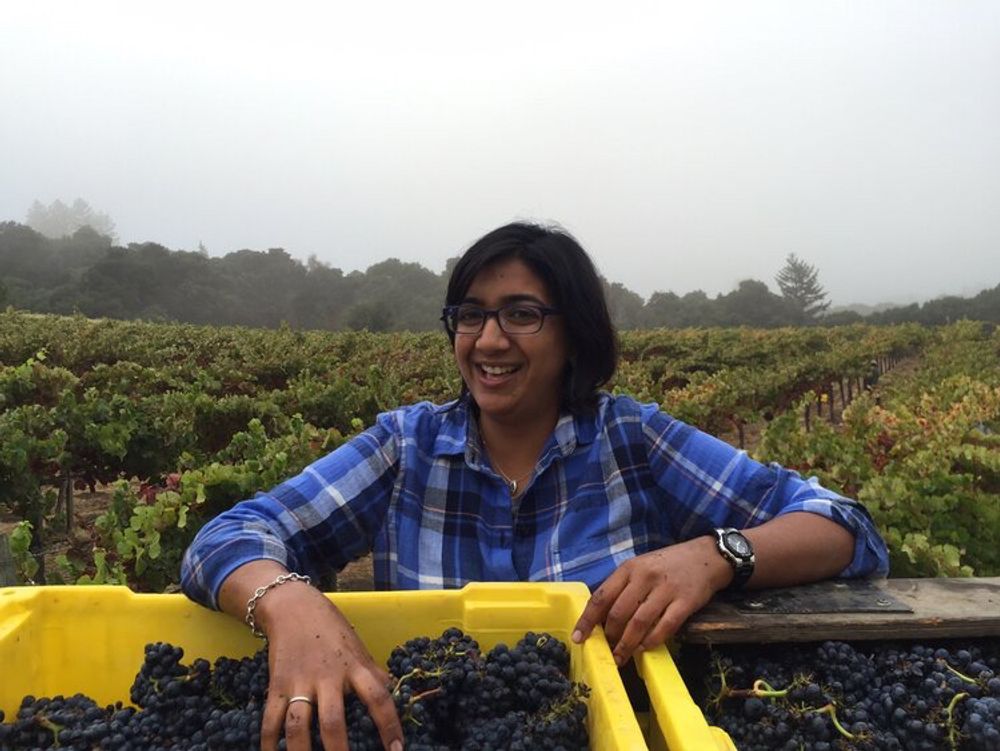
Shalini Sekhar says it is a time for us all to be able to listen and be more aware of our feelings
SS: The small things can really add up. Be the person who stands up when someone makes an off-colour joke. Don’t leave us out there to laugh it off or be the angry person who “took it the wrong way”. I vividly recall one of my best bosses and mentors ever asking someone to leave the winery because of the way they treated me. I won’t ever forget that she chose to do what was right rather than “risk losing a customer” by choosing to not do business with those folks.
Pay attention to your assumptions about POC, their backgrounds, upbringing, experiences, or qualifications. One of the lessons I’m constantly reminding myself of is that I need to ask questions of others and listen if I want to show I am truly interested in knowing them. I need to pause and give others space. BIPOC want to be treated like everyone else, so just start there.
Do you have any recommendations on how I can help the company I work for engage in mentorship programs for the BIPOC communities?
JC: If the company doesn’t want to help, what can you do personally? Every experience we have we bring to work. Show your company you believe in the work by doing it yourself first.
PF: I would start with having clear outlines for how you foresee the program working. Companies are unlikely to support programs that they see as a burden on resources or financially. So have a clear structure and expectations outlined. Speak to colleagues and see if you can approach it together as a team. Multiple voices are better than one.
SS: Additionally, if you are in a leadership role, seek to empower your team. You don’t need a formal program to mentor someone or help them with professional development. For example, if you are in production and don’t speak Spanish, make the effort to learn the basics. You’d be surprised at how much trust you can build in your organisation and how you might start to recognise people’s talents and skills with the language barrier removed. If you can advocate for staff training and education, do it. Anything you offer that shows you are interested in helping your team grow is a step in the right direction.
I would like to see more representation from women and women of colour on the boards for trade associations in the wine world. How can we have more diverse voices in trade associations for wineries and grape growers?
JC: Tell the trade associations to put BIPOC on their boards. If you are in a position or know someone in power. Get them to advocate on your behalf. What can you personally do? Write a letter? Have a conversation with the head of the board?
One of the ways to force change is to have evidence. There is a lack of reliable and complete data about women in the wine industry. What are your thoughts about putting pressure on governmental organisations or regional wine organisations to start collecting data about gender/colour?
JC: You know the surveys that we all get asked for data, such as Wine Business Monthly? We as women have to fill out the survey. Ask the region to create a survey and tell them why you believe they should create one. Then, make sure all your wine colleagues and friends fill out the survey. Sometimes we get surveys and don’t make time for them. I’m guilty too. When we know better, we do better.
SS: There is certainly much work to be done, but there are some resources already available. For example, Lucia Gilbert and John Gilbert have put together a comprehensive website of women winemakers in California, published a book on the subject and have conducted several studies. Of course, there is still much work to be done so it would be great to see other academics, governmental, trade, or regional wine organisations collect this data and make it available to folks in the industry.


